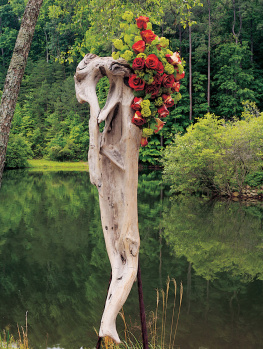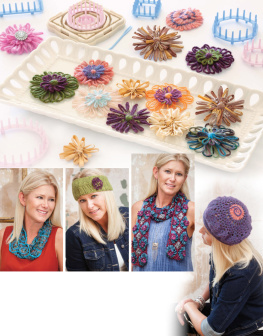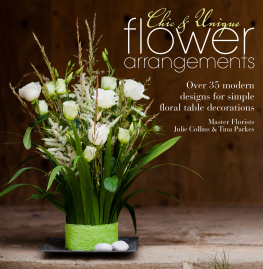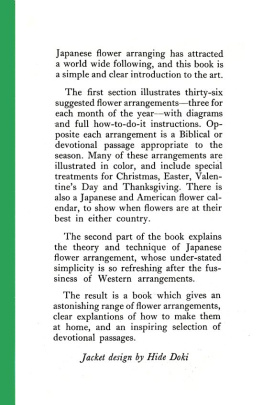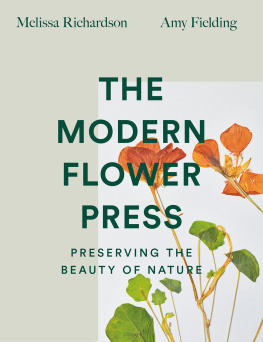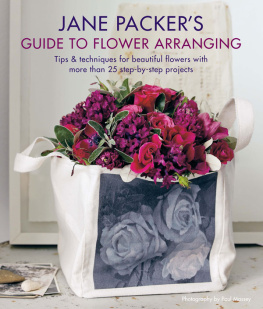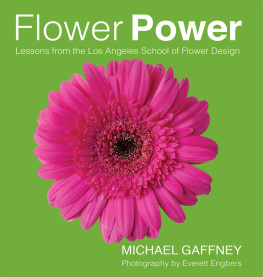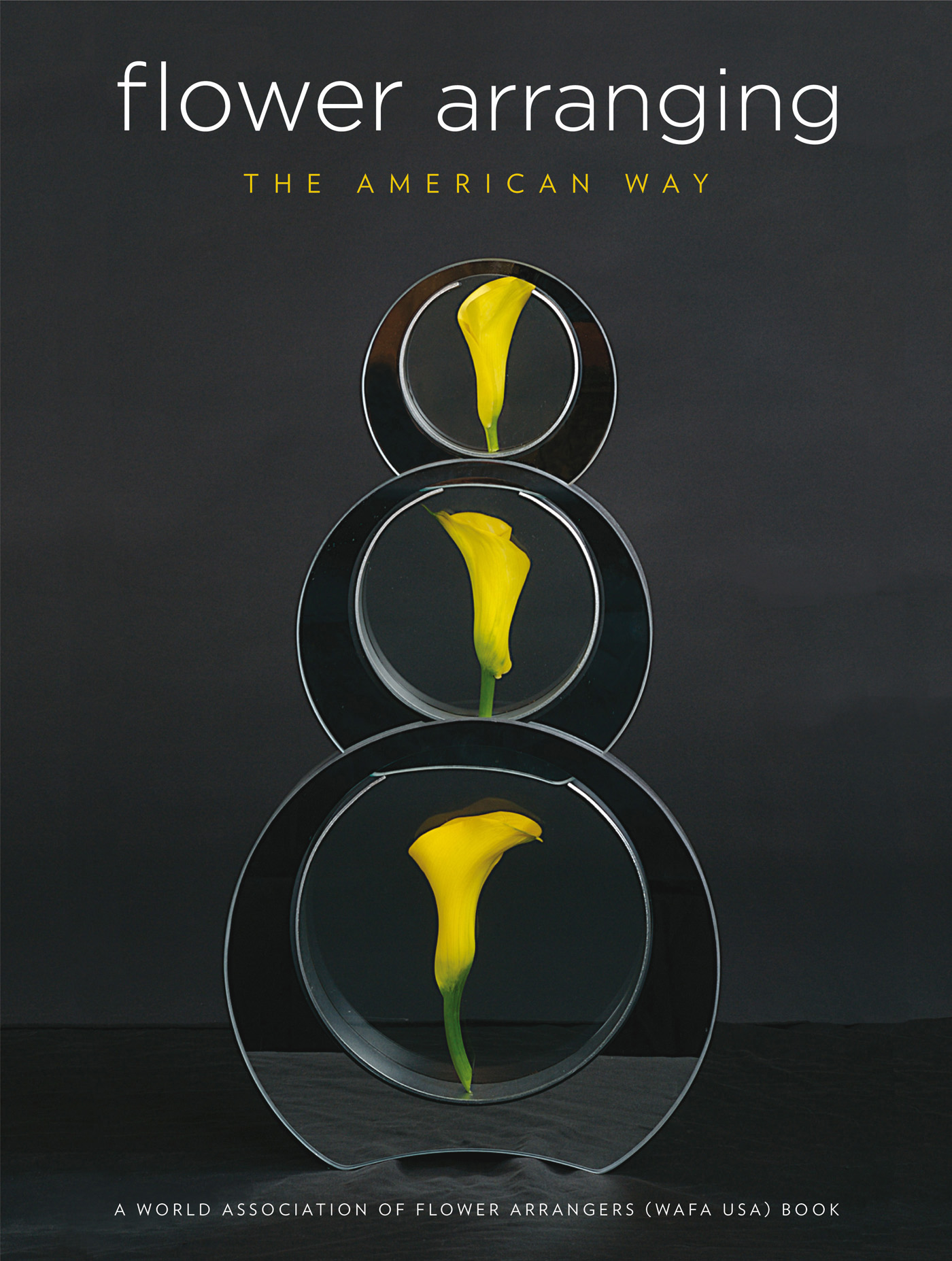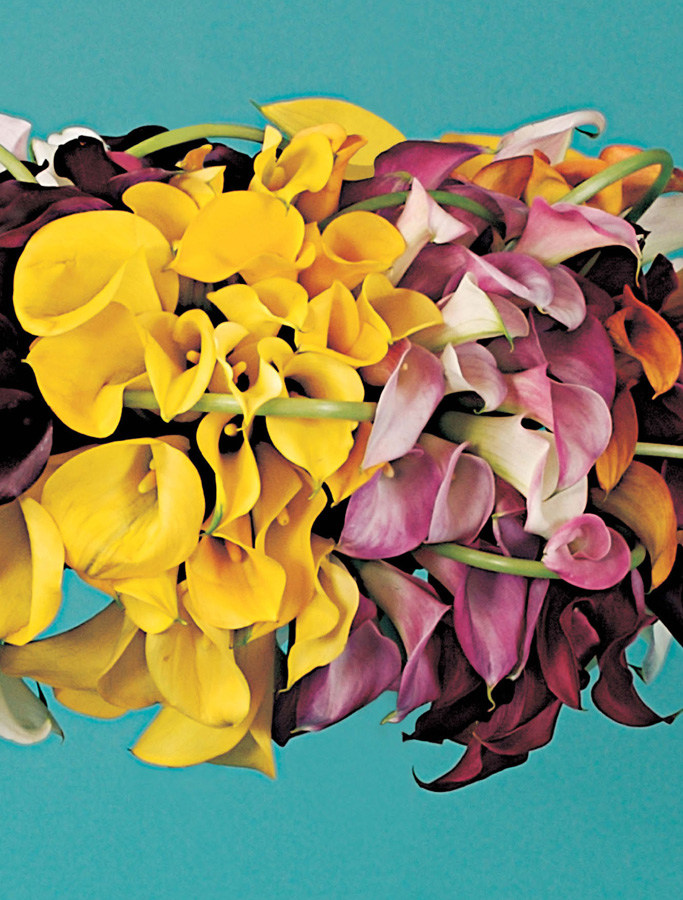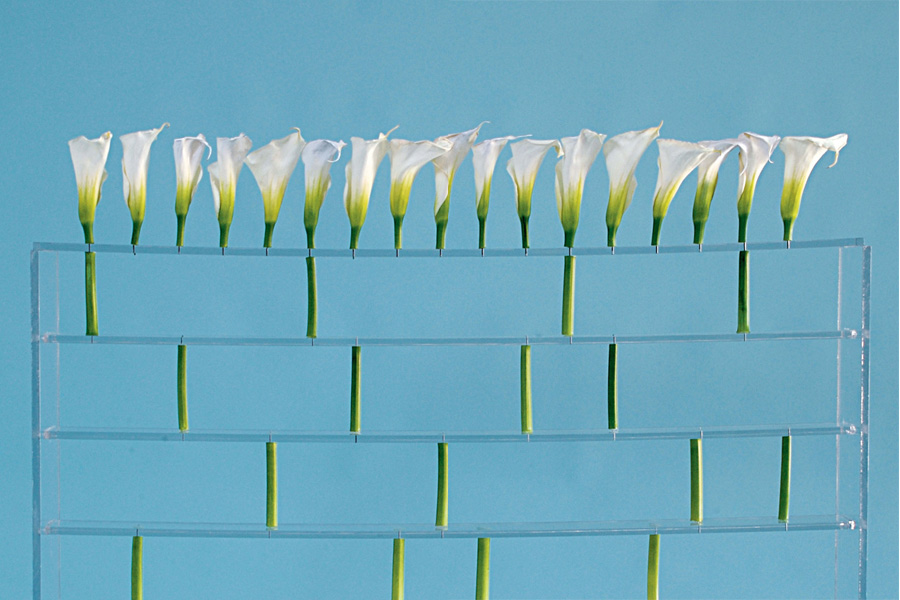
A double frame of black metal restrains but does not contain an arrangement of orange birds-of-paradise blossoms (Strelitzia reginae) and the larger leaves of Strelitzia nicolai. Negative space, created by the interplay of frame and plant material, gets equal billing in this design by Ann Tate of Daytona Beach, Florida. copyright Jim Jernigan
contents
Weathered wood, cactus skeletons, palm spathes, dried vines, gourds, leaves, stalks, pods, lichen, and mosstreasured for their sculptural qualitiesare gathered from across our vast land and given new life in the flower arrangers art.
Metals, plastics, and fibers merge with fresh and dried plant material in mixed-media works.
Fine glass and pottery pieces get equal billing in designs that unite plant material and container in an artistic whole.
Arrangers, working at different times but with the same selection of components, show that creativity can move in many directions.
Arrangers at the Memphis Flower Show respond to the sometimes far-out art on exhibit at the Dixon Gallery and Gardens. Chicagos Show of Summer and Houstons Florescence are also represented.
The form, not the function, of plates, glasses, and other dining components is the creative driver behind exhibition tables. These are not typical dinner tables, but with a little focus, the art in this flower show class can become crystal clear.
With a Midas touch, arrangers turn beans and seeds, pods and vines into jewelry that a queenor an Academy Award winnermight envy.
The style may changefrom period to traditional to line-massbut the love of an abundance of flowers remains strong. American arrangers embrace the modern mass and its innovative possibilities.
The modern mass style offers a basis for contemporary designs that move in new directionshorizontally and diagonally.
American arrangers seek out and embrace design styles and techniques from around the worldand invent a few of their own.

In this installation by Bliss Clark of Grosse Pointe Farms, Michigan, and Tasha Tobin of Akron, Ohio, palm spathes are joined by a stately member of the lily family, Eremurus. The flower, also known as foxtail lily or desert candle, is native to western and central Asia. copyright Tom Sherry

It is with great admiration, affection, and gratitude that
WAFA USA
dedicates
FLOWER ARRANGING THE AMERICAN WAY
to
DEEN DAY SANDERS
our muse and friend

The medium niche class in the 2008 Philadelphia Flower Show was titled Crescendo, and two Pennsylvania arrangers, Jane Godshalk of Haverford and Cres Motzi of Downington, said it all with leavesmagnolia leaves. They spent six hours wiring and gluing leaves back-to-back and front-to-front to create the wave. The vase, waiting in Janes closet for years, carried the brown of the leaves through the design. Yellow light installed in the niche warmed the scene. copyright John Motzi
introduction
It has become traditional that the country elected to host the World Association of Flower Arrangers publish a book celebrating the floral ethos of the land. While Flower Arranging the American Way is envisioned as a meaningful souvenir for our international visitors, it also serves a wider purpose as a general introduction to American floral design.
These primarily contemporary works of art have been created by talented amateurs drawn from across the nation. Today, new design ideas travel rapidly from country to country, resulting in a blending of flower arranging styles and techniques. However, there still is a pervading spirit in these designs that is distinctly American.
The arrangers have used plant material native to different climates and terrains in our country, the character of the material reflecting the diversity of our national landscape. Containers may range from rustic pottery to elegant family heirlooms, or may not be used at all. Long-standing conventions governing flower arranging have largely disappeared, yet the basic principles and elements of design are still the backbone of all floral design.
Several design classifications not typically found in flower arranging books have been included. Botanical jewelry and miniatures are American specialties. As the addition of these classes in flower shows has been extremely popular both with the public and arrangers alike, it seemed appropriate to incorporate them here as well. Another new interpretation, Exhibition Tablestables designed to give just the impression, rather than the reality, of the service of foodalso merits a chapter.
While the arrangements are the stars of the book, they would not be able to shine without the illumination of editor Nancy DOenchs words and the consummate brilliance of Mick Haless photographic images. We are truly grateful for their patience, perseverance, and sensitivity.
That depictions of arranged flowers have existed since the third millennium B.C. testifies to the tenacity of our art. That our American garden club organizations are both nearing their centennials (The Garden Club of America was founded in 1913 and National Garden Clubs in 1929) is proof of the long-standing love of flowers and flower arranging in this country. It is our privilege to share this sentiment with you through Flower Arranging the American Way

